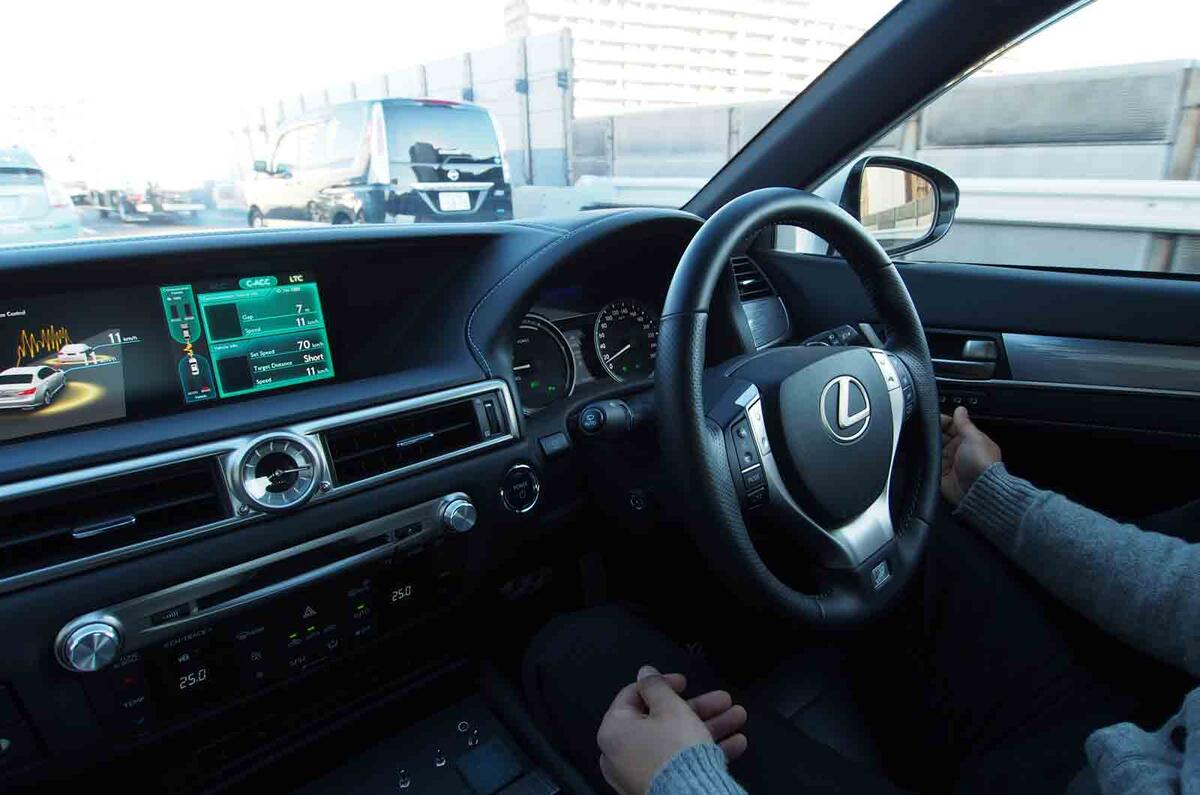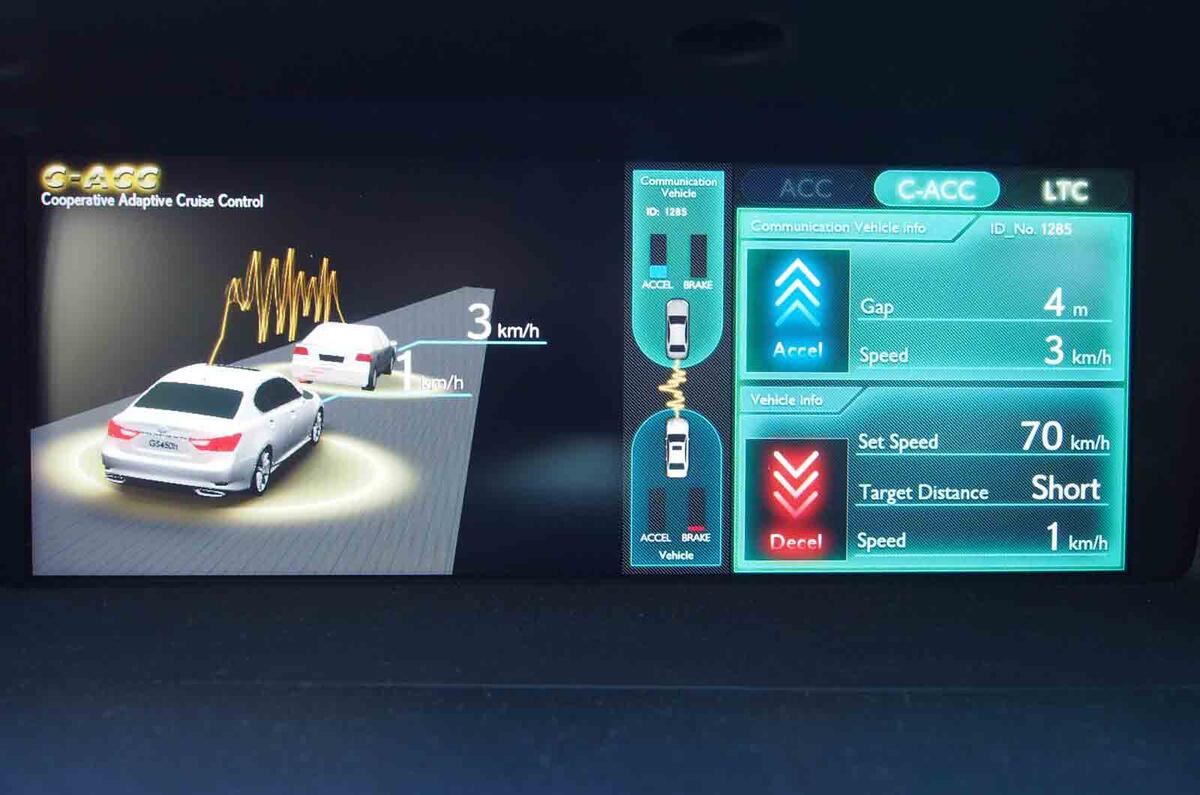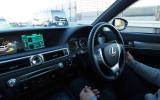Lexus has revealed two new autonomous driving technologies, ahead of the Tokyo motor show.
Called Cooperative-Adaptive Cruise Control (CACC) and Land Trace Control (LTC), they bring autonomous driving technology on urban roads and through tight curves a step nearer to show-room reality. Lexus sources suggest that LTC and CACC will be available by 2015 in Japan.
It demonstrated the system in a Lexus IS during the rush-hour Tokyo traffic, after gaining special permission from both a government agency and the local police to use the system on public roads. Autocar travelled in the front passenger seat of the IS and watched the engineer allow the car to steer itself around the tight curves of Tokyo’s elevated motorways.
At the moment, autonomous driving in flowing motorway traffic, on straight sections of road, is a near-production possibility held back only by legislation. The Lexus CAAC and LTC systems allow the driver to remain hands off in anything from stop-start urban traffic to fast-following traffic on sinuous urban motorways of the type that criss-cross the greater Tokyo area.
The CACC system allows low-speed urban autonomous driving by providing car-to-car communication between vehicles, with the following vehicle receiving information on acceleration and braking rates from the vehicle in front. This allows the following vehicle to adjust its speed and braking forced in concert with the car in front, ensuring a safe distance is kept between the two vehicles.
LTC takes autonomous driving a step further forward enabling the car to steer itself around a bend as tight as one with a 50-metre radius and at speeds up to 40mph. The LTC can operate in a straight line at up to 70mph. LTC calculates its position on the road using a ‘millimetre radar’ camera mounted on the nose and a camera mounted at the top of the windscreen. It calculates the course of the road ahead using the car’s navigation system.
Lexus engineers told Autocar that, at the moment, it seems as if a single car-to-car communication protocol is looking unlikely. Even in Japan, at today’s development stage, while Toyota and Mazda are using the same system, Nissan and Honda are using a different system.
However, Japanese car makers are in early discussions to use a common car-to-car protocol. Getting agreement on which frequencies to use across the European and North American markets is expected to take much longer.
Read more Tokyo motor show news.








Join the debate
Add your comment
Manufacturers are missing a big problem here
Sweet dreams.
i can just see the new